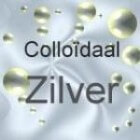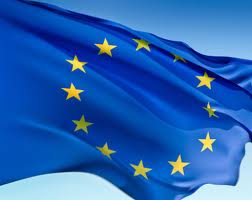Ingredienten hebben geen wetenschappelijk bewezen werking
Vzr RCC 30 oktober 2012, dossiernr. 2012/00834 (Klager tegen adverteerder Nuvoryn)
 De bestreden reclame-uitingen betreffen de onderdelen van de website nuvoryn.nl: De subpagina “how it works” voor zover het betreft de mededelingen: “Nuvoryn bevat specifieke ingrediënten die op specifieke vlakken helpen met afslanken” en “Nuvoryn werkt als een vetverbrander, en een stofwisseling- en energiebooster”, en de mededeling: “Klinisch geteste ingrediënten, bewezen resultaten”, daarnaast de subpagina betreffende de mededeling dat Nuvoryn erkend is door artsen en door doktoren (zoals dr. M. Weis) “aanbevolen” wordt.
De bestreden reclame-uitingen betreffen de onderdelen van de website nuvoryn.nl: De subpagina “how it works” voor zover het betreft de mededelingen: “Nuvoryn bevat specifieke ingrediënten die op specifieke vlakken helpen met afslanken” en “Nuvoryn werkt als een vetverbrander, en een stofwisseling- en energiebooster”, en de mededeling: “Klinisch geteste ingrediënten, bewezen resultaten”, daarnaast de subpagina betreffende de mededeling dat Nuvoryn erkend is door artsen en door doktoren (zoals dr. M. Weis) “aanbevolen” wordt.
Klager stelt dat de uitingen door de mededelingen onjuiste informatie bevatten en misleidend zijn. Klager betwist dat de ingrediënten van Nuvoryn helpen met afslanken of de werking hebben die in de uitingen wordt toegeschreven. De testimonials zijn misleidend. De uitingen zijn inderdaad niet feitelijk wetenschappelijk bewezen, en er volgt een aanbeveling om niet meer op dergelijke wijze reclame te maken.
Met betrekking tot de bestreden testimonials
4) Op de website staan diverse testimonials van personen die beweren dat zij Nuvoryn hebben gebruikt en daardoor een groot gewichtsverlies hebben ervaren. Klager heeft onweersproken gesteld dat deze testimonials niet overeenkomen met onderzoekresultaten. De voorzitter is om die reden van oordeel dat niet kan worden aangenomen dat de testimonials op waarheid berusten. In zoverre is de uiting in strijd met artikel 9 NRC.Met betrekking tot de mededeling dat Nuvoryn is erkend en wordt aanbevolen door artsen
5) De voorzitter is van oordeel dat de gemiddelde consument op grond van de hier bedoelde mededelingen zal aannemen dat Nuvoryn ook in Nederland door artsen als afslankmiddel is erkend en wordt aanbevolen. Klager heeft evenwel onweersproken gesteld dat Nuvoryn in de NHG-standaard “Obesitas M95” voor huisartsen niet wordt genoemd als voedingssupplement voor de behandeling van obesitas. Ook verder is niet gebleken dat in Nederland Nuvoryn door artsen is erkend en wordt aanbevolenDe beslissing van de voorzitter
De voorzitter beveelt adverteerder aan om niet meer op een dergelijke wijze reclame te maken.
 Reclamerecht. Klaagster stelt, kort samengevat, dat het onduidelijk is of het gaat om een penisvergrotend of erectiestimulerend middel. Voor geen van beide toepassingen is de beweerde werkzaamheid van jojoba-olie of enig andere (niet nader genoemde) stof in de crème, wetenschappelijk aangetoond.
Reclamerecht. Klaagster stelt, kort samengevat, dat het onduidelijk is of het gaat om een penisvergrotend of erectiestimulerend middel. Voor geen van beide toepassingen is de beweerde werkzaamheid van jojoba-olie of enig andere (niet nader genoemde) stof in de crème, wetenschappelijk aangetoond. Een bijdrage van Marieke Coumans,
Een bijdrage van Marieke Coumans,  Een samenvatting van de brief met de volgende onderwerpen:
Een samenvatting van de brief met de volgende onderwerpen: In de bestreden uiting wordt gesteld dat colloïdaal zilver “het Eérste Redmiddel bij Virussen, Bacteriën, Schimmels, Parasieten en Prionen” is. Klaagster legt een monografie van de Natural Medicines Comprehensive Database betreffende colloïdaal zilver over. Uit de onder “Effectiveness” weergegeven conclusie blijkt dat er geen bewijs is voor de werkzaamheid van colloïdaal zilver, ook in de medische literatuur is niets hierover te vinden.
In de bestreden uiting wordt gesteld dat colloïdaal zilver “het Eérste Redmiddel bij Virussen, Bacteriën, Schimmels, Parasieten en Prionen” is. Klaagster legt een monografie van de Natural Medicines Comprehensive Database betreffende colloïdaal zilver over. Uit de onder “Effectiveness” weergegeven conclusie blijkt dat er geen bewijs is voor de werkzaamheid van colloïdaal zilver, ook in de medische literatuur is niets hierover te vinden. Today was a big day with a
Today was a big day with a  With permission, CC-BY-SA
With permission, CC-BY-SA  Deelgeschil. Productenaansprakelijkheid. In maart 2002 is verzoekster ten val gekomen door een gebrek in een trippelstoel, waarvan verweerster de leverancier is. Verzoek en tegenverzoek. Rapportage van bij voorlopig deskundigenbericht benoemde deskundige bindend? (Voorlopig) deskundigenbericht dient als uitgangspunt voor de verdere schadeafwikkeling en niet de daarna uitgebrachte rapportage van partijdeskundige.
Deelgeschil. Productenaansprakelijkheid. In maart 2002 is verzoekster ten val gekomen door een gebrek in een trippelstoel, waarvan verweerster de leverancier is. Verzoek en tegenverzoek. Rapportage van bij voorlopig deskundigenbericht benoemde deskundige bindend? (Voorlopig) deskundigenbericht dient als uitgangspunt voor de verdere schadeafwikkeling en niet de daarna uitgebrachte rapportage van partijdeskundige. Commentaar in't kort van Karin Verzijden,
Commentaar in't kort van Karin Verzijden,  Een bijdrage (op persoonlijke titel) van John Lisman,
Een bijdrage (op persoonlijke titel) van John Lisman, 















